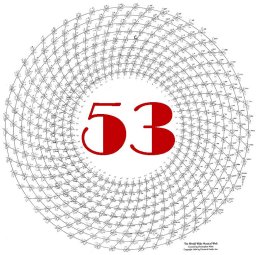Next Page: 11/8 – Commas in 12-eq
Traditional Voicing Rules in Four-Part Harmony
No one ever climbed Mt. Everest without first establishing a base camp. 4-part writing is our theoretical “base camp” in the music world. –“Jazzguy2076”
To listen to nature is to be humble in the face of it, to recognize ourselves as part of it, to hear its music. It’s worth remembering that what we call “functional harmony” in music theory has its roots in the physics of our natural world—in the unique relationships of sound, of vibrations. (This has diverse manifestations in classical traditions all around the world, across different tuning systems and different formal logics.) Music theory doesn’t exist in a vacuum, and voice-leading is the stuff of the earth. –Conrad Tao
Pure voicing exercises in four-part harmony end up sounding a lot like church hymns…. Once you learn how to create four-part harmony following as many of the rules as possible, you can also learn to strip down any traditional classical piece to its four-part ”skeleton.” After removing passing notes, eliminating notes that are held over from one chord to another, and taking out the anticipatory notes and trills and mordants and grace notes, you have only the pure chordal structure. The X-Ray you get of a composition’s skeleton tells you volumes about the musical journey a composer is taking you on. You’ll be amazed at how closely the most adventurous music of even the late-nineteenth century sticks to these rules. I was once told, for example, of a theorist who studied all 1000+ works of Bach. He found only one violation of the “rules”: a single parallel fifth in one bar among the hundreds of thousands he wrote.
The rules of voicing have as their goal a smooth and comprehensible transition from one chord to the next. It’s extremely helpful to know them. You are not limited by these rules; when you break a rule you know you are doing it for dramatic effect. If you break one rule after another out of ignorance, however, your music will just sound clunky. Voicing rules are also a balancing act. As you move from one chord to another, you may find that to follow one rule, another must be broken. It takes time to cultivate a sense of the “hierarchy” of these rules. There are many traditional music theory books which focus intensely on these principles of voicing. Mathieu’s Harmonic Experience book is not one of them, so as I took lessons from my teacher, I compiled my own list of rules and regulations. These are some of the same commandments you can find in any standard music theory book. You’ll find that conformity to these rules of voicing is an incredibly effective way of honoring the harmonic series and our ears’ natural attunement to the overtones.
The voicing rules developed concurrently with the 12-note temperaments, and they are important in both 12-eq and 53-eq in different ways. In the 12-note temperaments, you need good voicing because the twelve pitches are all out of tune. If you want the natural harmonic beauty of your music to shine through the “noise” inherent in 12-eq, your skills in voicing will help penetrate the harmonic fog. In 53-eq, you have tremendous harmonic clarity, and as a result, bad voicing can create some weird overtonal clashes that are painfully audible. But since the rules of voicing are designed to emphasize the harmonic beauty of your music, they apply equally well in 12-eq and 53-eq, even if for somewhat different reasons. When we get to septimal harmony (chords built off of the seventh harmonic, which are not yet part of our harmonic tradition) in Chapter 14, you will find that voicing technique needs to be impeccable, or the ear won’t follow a septimal chordal transition at all. Let’s start with the rules that apply in traditional 12-eq tuning (and equally well in 53-eq)….
This chapter continues with several dozen traditional voicing rules you might learn in any music theory textbook, but reasons are given as to why these rules exist. If you would like to learn more about this chapter, “Traditional Voicing Rules in Four-Part Harmony,” and much more, you can buy the entire book, The Grand Unified Theory of Music, in pdf form for $25 with hundreds of embedded musical examples of scales and chords from all over the world.
A free introduction to what The Grand Unified Theory of Music offers is on this website and includes both text and a few musical examples from each webpage. If you would like to learn more about this chapter and the full contents of this entire e-book, you can buy The Grand Unified Theory of Music for $25, with hundreds of embedded musical examples of scales and chords from all over the world — and ideas for how to set up your computer system —
HERE.
You’ll get a personalized password you can use to see the entire e-book. Inside the full book, you will also get a link to the complete pdf file of this e-book, which you can read on your Kindle or similar device. The links to the hundreds of mp3 sound files – the same ones you can hear on the website — will also be included. This is “Version 1.0” of The Grand Unified Theory of Music. Because it is an e-book, additions, corrections and improvements in the sound may be added at any time. The Grand Unified Theory of Music is Copyright © 2018 by Christopher Mohr. All rights reserved.
One person per password. Sharing this password with others is a violation of copyright. Do not allow others to use your password or link to the pdf file!
